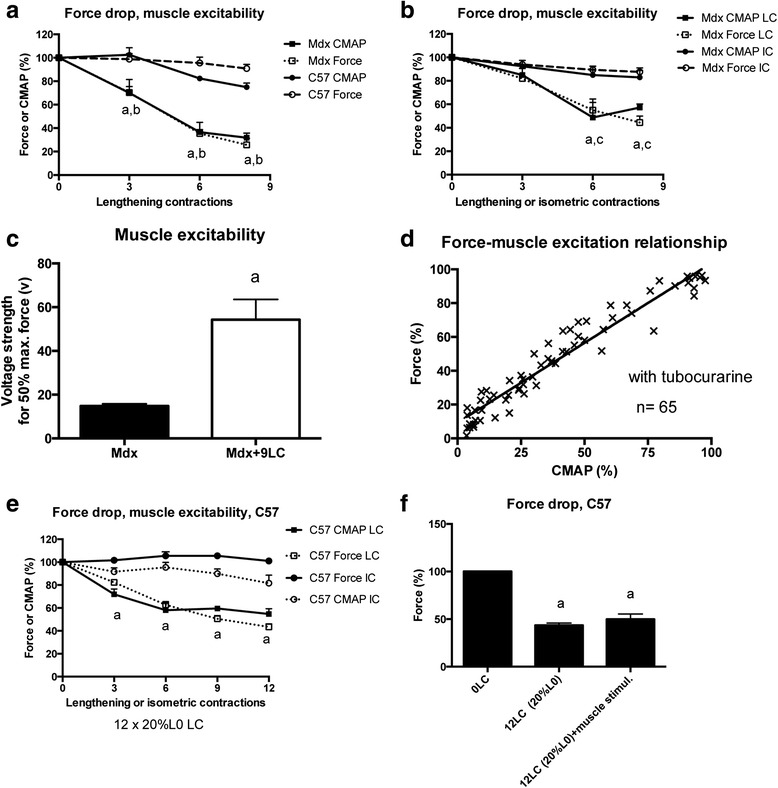Fig. 3.

Muscle excitability following lengthening contractions in the TA muscle from mdx mice. Compound muscle action potential (CMAP) was measured in response to nerve (a, b, and d) or muscle stimulation (c). a CMAP (root mean square, RMS) in response to nerve stimulation recorded during lengthening contractions in mdx mice. The force drop was also shown. b CMAP (RMS) in response to nerve stimulation recorded during lengthening or isometric contractions in mdx mice. The force drop was also shown. c Voltage strength (V) needs to obtain 50 % of maximal force in response to muscle stimulation when neuromuscular transmission was inhibited by tubocurarine in mdx mice. d Force and CMAP (RMS) relationship obtained when CMAP in response to nerve stimulation was experimentally reduced by tubocurarine, in the mdx muscle at the basal state (before lengthening contractions). e CMAP (root mean square, RMS) in response to nerve stimulation recorded during lengthening and isometric contractions in C57 mice. The force drop was also shown and was induced by a severe lengthening contraction protocol (12 × 20 % L0). f Force drop following nine lengthening contractions in C57 mice and direct muscle stimulation with high voltage (80 V). CMAP compound muscle action potential, Mdx + 9LC after nine lengthening contractions in mdx mice, Mdx LC lengthening contractions in mdx mice, Mdx IC isometric contractions in mdx mice, 12LC (20 % L0) 12 × 20 % lengthening contractions were performed in C57 mice, 12LC(20 % L0) + muscle stimul stimulating electrodes were located on the muscle after 12 × 20 % L0 lengthening contractions in C57 mice, C57 LC 12 × 20 % L0 lengthening contractions in C57 mice, C57 IC 12 isometric contractions in C57 mice, a significantly different from before lengthening contractions (p < 0.05), b significant difference between strains (p < 0.05), c significant difference from IC (p < 0.05). n = 6–13 per group
